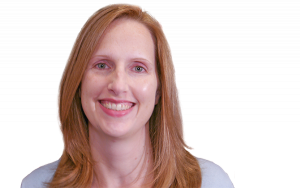There. I’ve admitted it. I’m afraid of personalized learning. Of course, I’m fascinated by it too. But the allure only adds to my fear—lots of people are being drawn in, but to what, exactly? If personalized learning means personalized pathways to mastering a well-rounded curriculum, it could radically improve education. If it means personalized pathways and personalized content, then here comes the next flood of snake oil.
Here’s a typically jumbled description of personalized learning from “creative learning strategist” Barbara Bray:
A personalized learning environment is more competency-based where students progress at their own pace instead of by grade levels. No more “mandated” seat time. The learner has their own learning path with multiple strategies to meet their different learning styles… Learners are co-designers of the curriculum with the teachers. Teachers are co-learners with the learners. The teacher doesn’t have to be the hardest working person in the classroom; the learners need to be. They want to learn because they chose the topic and understand what they need to learn. They want to succeed so they try harder. They succeed because they designed their learning goals.
Moving at your own pace is promising — especially if students who are behind are assisted with accelerating their pace. The risk is that the very notion of being “behind” evaporates, leaving us with students aging out of public schooling before they become college, career, or citizenship ready. And yet, some combination of individual pacing, year-round options, and benchmarks for predicting when students will meet graduation criteria could be very powerful.
Personalized content, in contrast, strikes me as irresponsible and dangerous. If allowed to choose my own content in elementary school, I would have become an expert in princesses and dogs. Fortunately, most of my elementary and middle years were in a school that had English, math, science, history, French, Latin, and PE every day. By high school, not coincidentally, my interests were as broad as my elementary curriculum had been.
While personalized content might seem like the path to engagement, it’s likely to be the path to widening the achievement gap and locking even more people out of our democracy. Young people don’t know what they need to learn. Some children have the advantage of college-educated parents and are immersed in conversations, books, and trips that build their knowledge of the world constantly. Others don’t. Neither they nor their parents know that comprehension—and therefore everything else—depends on broad knowledge and an enormous vocabulary.
Sadly, a lot of teachers (and professors in teacher preparation programs) seem unaware of the need for broad knowledge too. Once children have learned to sound out words, reading comprehension is widely misunderstood as a skill that depends on applying strategies like finding the main idea. Cognitive science (and common sense) has established that comprehension actually depends on knowledge and vocabulary. If you know about dinosaurs, you can read about them. If you don’t know about a topic and haven’t learned vocabulary related to that topic, you’ll struggle, as this example from Nature shows: “Chirality plays a fundamental part in the activity of biological molecules and broad classes of chemical reactions, but detecting and quantifying it remains challenging. The spectroscopic methods of choice are usually circular dichroism…” Being reminded to find the main idea won’t help. Being taught about chirality will.
Personal choice of some content could be layered on top of a rich, pre-established curriculum. But the school must remain responsible for steering students toward worthwhile studies. As a recent article by Daniel Willingham notes:
Researchers have long known that going to school boosts IQ…schooling makes students smarter largely by increasing what they know, both factual knowledge and specific mental skills like analyzing historical documents and learning procedures in mathematics…
Education-policy debates tend to focus on structural issues — things like teacher quality, licensure requirements, and laws governing charter schools. But research on human memory indicates that academic content and the way it is sequenced — i.e., curriculum — are vital determinants of educational outcomes, and they’re aspects that receive insufficient attention.
For personalized learning to work, advocates will have to become far more careful about what students are learning and how they are able to revisit and build on their knowledge over several years.
It may be that my fears are premature. Most schools and districts are still far from being able to offer personalized learning—they simply don’t have the technology yet to make it feasible at scale. But they are tip-toeing in that direction. Education Week noted recently that there’s an increasing demand for bites of curriculum: Instead of selecting one comprehensive program, “districts are asking to … mix and match with selections from other content providers, material that teachers and students have created, and open educational resources.”
That’s great for schools that have a coherent, cumulative, grade-by-grade, topic-specific curriculum. Teachers will have the curriculum as a scaffold, and they can search for materials on each topic that best meet their students’ needs. Assuming that scaffold is well developed, the topics will build on each other, giving all students an equal opportunity to acquire broad knowledge and skills.
But relatively few schools have such a curriculum. In too many schools, the pursuit of engagement and personalization is causing some educators to lose sight of the bigger picture. As Marc Tucker wrote, “The phrase ‘learn how to learn’ comes trippingly off the tongue these days. But much less is usually said about what makes it possible to learn new things quickly… And much is made of the importance of interdisciplinary knowledge. But that knowledge will do you little good unless you first understand the disciplines themselves, not just superficially, but at a deep conceptual level. As one builds up that kind of knowledge in multiple disciplines, it becomes possible to draw on the knowledge and concepts in those domains to see the connections among them. Learning new things is much easier when you can build on this sort of foundation.”
In short, cognitive science tells us that broad knowledge and topic-specific knowledge are necessary for learning and thinking. And both science and common sense tell us that shared knowledge is necessary for effective communication.
Personalized learning might get us there, but only if we ensure all students study rigorous and rich academics — including history, art, geography, music, and science every year.
Get stories like these delivered straight to your inbox. Sign up for The 74 Newsletter


;)
